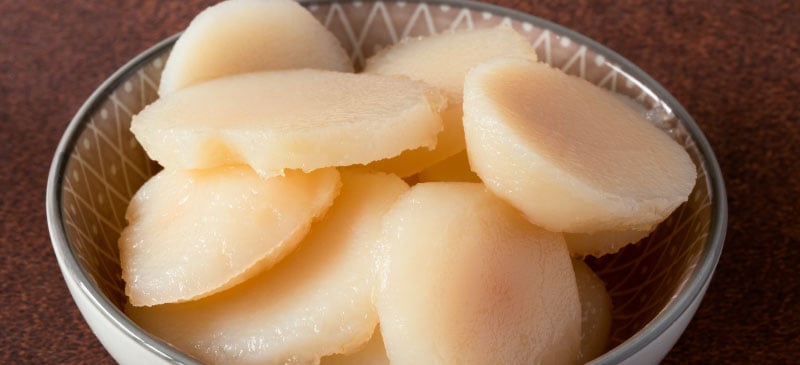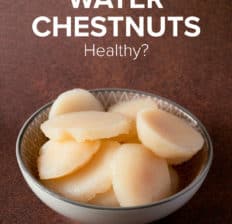This Dr. Axe content is medically reviewed or fact checked to ensure factually accurate information.
With strict editorial sourcing guidelines, we only link to academic research institutions, reputable media sites and, when research is available, medically peer-reviewed studies. Note that the numbers in parentheses (1, 2, etc.) are clickable links to these studies.
The information in our articles is NOT intended to replace a one-on-one relationship with a qualified health care professional and is not intended as medical advice.
This article is based on scientific evidence, written by experts and fact checked by our trained editorial staff. Note that the numbers in parentheses (1, 2, etc.) are clickable links to medically peer-reviewed studies.
Our team includes licensed nutritionists and dietitians, certified health education specialists, as well as certified strength and conditioning specialists, personal trainers and corrective exercise specialists. Our team aims to be not only thorough with its research, but also objective and unbiased.
The information in our articles is NOT intended to replace a one-on-one relationship with a qualified health care professional and is not intended as medical advice.
Water Chestnuts Can Enhance Weight Management, Immunity & Digestion
August 3, 2023

Frequently featured in stir-fries and steamed vegetable medleys — along with bamboo shoots — most people have tried water chestnuts at one point or another, whether they know it or not. This starchy aquatic veggie offers a unique taste and texture, plus an incredible array of benefits.
High in antioxidants, fiber and a wealth of micronutrients, adding this versatile vegetable to your diet can be fantastic for your health.
So what exactly is a water chestnut, and are canned water chestnuts healthy? Plus, how can you start adding this flavorful veggie to your daily diet?
Let’s take a closer look.
What Are Water Chestnuts?
What is a water chestnut? Known by its scientific name Eleocharis dulcis, the Chinese water chestnut is a grass-like plant that is native to certain areas in Asia, Australia and Africa — as well as several islands in the Pacific and Indian Oceans.
Contrary to what its name suggests, it’s not actually a nut at all. It is a type of aquatic vegetable that grows underground in marshes.
Are water chestnuts related to chestnuts? No, the water chestnut should not be confused with the water caltrop or sweet chestnut, both of which are unrelated and belong to entirely different families of plants.
The water chestnut plant has long, stem-like leaves and grows a small, round, edible corm underground. This is the part of the plant that is commonly consumed. It is enjoyed for its crisp texture that it manages to retain even after cooking.
It can be commonly found in vegetable medleys and in an assortment of Asian dishes and cuisines.
In addition to its distinct taste and texture, the water chestnut is also revered for its impressive nutrient profile. The extensive water chestnuts benefits also make it a popular choice. In fact, some research suggests that adding this aquatic veggie to your diet could help optimize heart health, enhance digestion and support weight loss as well.
Water Chestnut Nutrition Facts
Take a look at the water chestnuts nutrition profile, and it’s easy to understand why this aquatic vegetable is so great for your health. Each serving provides a good amount of water chestnuts carbs and fiber, plus micronutrients like manganese, potassium, copper and vitamin B6.
What is the nutritional value of water chestnuts? A 3.5-ounce serving of raw water chestnuts (about 100 grams) contains approximately:
- Calories: 97
- Total Carbohydrates: 23.9 g
- Fiber: 3 g
- Sugar: 4.8 g
- Total Fat: 0.1 g
- Saturated Fat: 0.03 g
- Polyunsaturated Fat: 0.04 g
- Protein: 1.4 g
- Sodium: 14 mg
- Manganese: 0.3 mg (17% DV)
- Potassium: 584 mg (17% DV)
- Copper: 0.3 mg (16% DV)
- Vitamin B6: 0.3 mg (16% DV)
- Riboflavin: 0.2 mg (12% DV)
- Thiamine: 0.1 mg (9% DV)
- Vitamin C: 4 mg (7% DV)
- Vitamin E: 1.2 mg (6% DV)
- Phosphorus: 63 mg (6% DV)
- Niacin: 1 mg (5% DV)
- Magnesium: 22 mg (5% DV)
- Pantothenic Acid: 0.5 mg (5% DV)
*Daily Value: Percentages are based on a diet of 2,000 calories a day.
In addition to the nutrients listed above, water chestnut nutrition also contains a small amount of folate, zinc, selenium and calcium.
Water Chestnuts vs. Jicama
Jicama is a root vegetable that is often compared to the water chestnut given their similarities in taste and texture. In fact, jicama is sometimes referred to as “Mexican water chestnut.” It is said to have a taste that is described as a cross between a water chestnut and an apple.
Despite their similarities, these two vegetables are actually unrelated and native to entirely different parts of the world. While water chestnuts are indigenous to Asia, Australia, Africa and certain islands in the Pacific, jicama originally hails from Mexico.
Jicama has a yellow, papery exterior that covers the crisp white flesh inside. It has a unique sweet and starchy flavor.
Gram for gram, jicama is lower in calories and carbs but higher in fiber and vitamin C compared to water chestnuts. Water chestnuts, on the other hand, contain a higher amount of key nutrients, like potassium, manganese, copper and vitamin B6.
That said, both are highly nutritious and can be enjoyed in moderation as part of a balanced diet.
Health Benefits
1. Promote Weight Loss
Water chestnuts are low in calories yet high in nutrients. This makes them a great addition to a healthy weight loss diet. Plus, a good amount of the carbs in water chestnuts are actually in the form of fiber, which moves through the body undigested to support satiety and keep you feeling fuller for longer.
Not only that, but water chestnuts have a high water content. In fact, they are made up of about 74 percent water.
Studies show that eating more foods with a low energy density, such as water chestnuts, can decrease caloric intake to promote weight loss.
2. Loaded with Antioxidants
Water chestnuts are a great source of antioxidants. Antioxidants are health-promoting compounds that help fight free radical formation and prevent cell damage.
In addition to decreasing oxidative stress in the body, antioxidants also play a central role in health and disease. They may help protect against chronic conditions like cancer and heart disease.
In particular, water chestnuts are a good source of several key antioxidants, including ferulic acid, gallocatechin gallate, epicatechin gallate and catechin gallate. Furthermore, an in vitro study published in the Journal of Food Science showed that the antioxidants found in water chestnuts can help effectively neutralize disease-causing free radicals to support better health.
3. Enhance Heart Health
Packing 17 percent of the potassium you need per day into each serving, including water chestnuts in your daily diet can have a big impact on heart health. Increasing your intake of potassium is vital to heart health. It is especially important when it comes to lowering blood pressure and preventing hypertension.
In addition to keeping blood pressure in check, getting more potassium in your diet can also reduce the risk of heart disease. One large review conducted by the University of Naples Medical Center showed that a higher intake of potassium was associated with a lower risk of stroke, coronary heart disease and cardiovascular disease.
4. May Have Anti-Cancer Properties
Thanks to their rich content of antioxidants, water chestnuts may possess potent anti-cancer properties. Although current research is limited to in vitro studies, certain compounds found in water chestnuts have been shown to decrease the growth of cancer cells.
Specifically, ferulic acid is an antioxidant that can help block the development and spread of tumor cells. In particular, in vitro studies show that this powerful compound can be effective against the formation of thyroid, breast and lung cancer cells.
5. Support Healthy Digestion
Water chestnuts are a great source of fiber. Fiber moves through the body undigested, adding bulk to the stool to promote regularity and optimize digestive health.
Studies show that upping your intake of fiber can come with a multitude of health benefits. In fact, getting a few extra servings of fiber in your diet may aid in the treatment of digestive conditions like hemorrhoids, intestinal ulcers, diverticulitis and gastroesophageal reflux disease.
Fiber also has been shown to promote regularity by increasing stool frequency in those with constipation.
Uses in Traditional Medicine
Water chestnuts are high in essential nutrients and packed with medicinal properties. For this reason, water chestnuts are considered a staple in many branches of traditional medicine.
In Ayurvedic medicine, water chestnuts are used to calm the pitta dosha and act as a natural diuretic to promote urine production. They are also thought to support proper blood clotting and healthy libido and keep your bones strong.
In Traditional Chinese Medicine, this aquatic vegetable is used to manage blood pressure, stabilize blood sugar, and treat ailments like hemorrhoids and diarrhea. Additionally, water chestnuts are believed to naturally soothe sore throats and optimize liver health as well.
How to Add to Diet (Recipes)
Water chestnuts are native to Asia and a common ingredient in many different Chinese dishes. In China, they are often eaten raw as a snack or enjoyed slightly sweetened for a tasty treat.
They are also found in steamed or sautéed vegetable medleys. These veggies are ground into a fine flour as well and used to make water chestnut cake, which is a type of Cantonese dim sum dish.
Water chestnuts are used in many other types of cuisine as well. For example, in Thailand, they are used to make thapthim krop, a famous dessert that is made up of cubes of water chestnuts in syrup. Meanwhile, in Vietnam they can be found in Nước Sâm, an herbal tea that contains roasted water chestnuts plus dried longan and the flower of the sawtooth herb.
Unlike other vegetables, water chestnuts are unique because they are able to retain their distinct crunchiness even after being cooked or canned. This is due to their chemical structure. The cell walls of the vegetable are cross-linked, and compounds like ferulic acid help provide strength to keep them from becoming too soft during the cooking process.
Wondering where to buy water chestnuts? While fresh water chestnuts may be difficult to find outside of specialty Asian markets, jarred or canned water chestnuts are available in most major grocery stores.
Once you get your hands on this crunchy vegetable, you may wonder: Do water chestnuts need to be cooked? Fresh water chestnuts can be peeled and enjoyed as is, while canned varieties should be rinsed or soaked in water to enhance the flavor.
Both types can be enjoyed raw or cooked and added to main courses and side dishes alike.
There are plenty of methods for how to cook water chestnuts to enjoy them in your favorite water chestnut recipes. A few of the most popular ways involve boiling them, roasting them on a baking sheet or sautéing them as part of a flavorful stir-fry. You can also grate them and add them to curries, salads and casseroles or use dried and ground water chestnuts as an alternative to regular flour.
When cooking them with other ingredients, however, be sure to add them near the end of the cooking process to ensure they retain their signature crunch and crispness.
Recipes
There are many different ways to enjoy the multitude of health benefits that this aquatic vegetable has to offer. Here are a few easy water chestnuts recipes to try at home to help get you started:
- Spicy Cucumber, Tomato and Water Chestnut Salad
- Mushroom and Water Chestnut Lettuce Wraps
- Asian Chicken and Water Chestnut Patties
- Stir-Fried Water Chestnuts
- Sautéed Green Beans with Water Chestnut and Ginger
- Cashew Chicken Lettuce Wraps
You can also throw them in a Thai Chicken Stir Fry, Turkey Stir Fry or Salmon Stir Fry.
Risks and Side Effects
Water chestnuts can be a healthy and nutritious addition to a well-rounded diet when enjoyed in moderation. That said, they may not be for everyone.
There are several things to keep in mind before adding them to your daily routine.
First of all, keep in mind that water chestnuts are considered a starchy vegetable, much like other ingredients, such as green peas, corn and potatoes. Starchy vegetables are relatively high in carbohydrates, so it’s important to keep your intake in moderation to avoid unwanted spikes in blood sugar levels, especially if you have diabetes.
Additionally, note that water chestnuts are unrelated to sweet chestnuts and not considered a tree nut at all. Thus, they can be safely consumed by those with an allergy to other tree nuts, such as almonds, walnuts and pistachios.
However, some people may be allergic to water chestnuts, which can cause food allergy symptoms like hives, itching, swelling and redness. If you notice these or any other adverse side effects after consuming water chestnuts, discontinue use immediately and talk to your doctor.
Final Thoughts
- What are water chestnuts? The water chestnut is a type of aquatic plant that produces an edible corm that grows underground. It has a crisp, starchy white interior that stands out from other vegetables because it retains its signature crunch even after cooking.
- Each serving provides a good amount of carbohydrates and fiber, plus micronutrients such as manganese, potassium, copper and vitamin B6.
- Water chestnuts are high in antioxidants and cancer-fighting properties. They may help promote weight loss, enhance heart health and support healthy digestion.
- Best of all, water chestnuts are highly versatile. They can be incorporated into a variety of different recipes as part of a well-rounded, healing diet.


